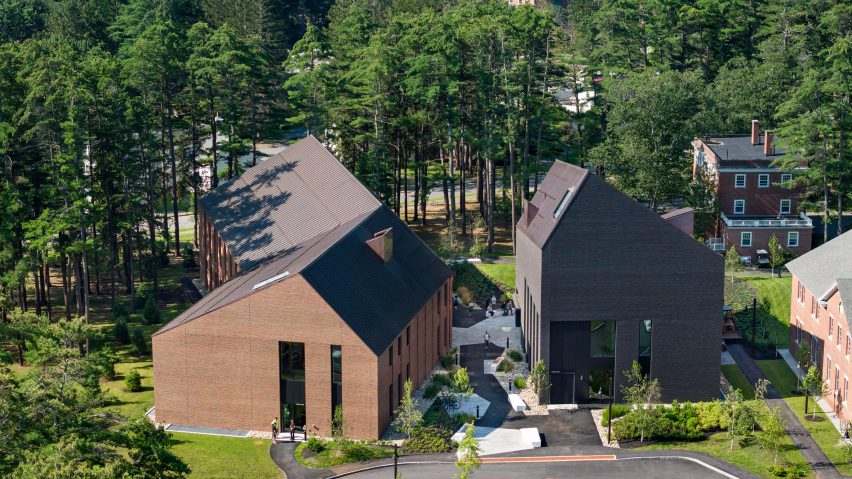
HGA creates two mass-timber buildings for Bowdoin College in Maine
Design studio HGA has completed a pair of educational facilities, Mills Hall and Gibbons Center, that are among the first "commercially scaled mass-timber buildings" in the state of Maine.
Located near a grove of mature pine trees, the neighbouring buildings are in the southeast corner of the 215-acre (87-hectare) Bowdoin College campus in the city of Brunswick.
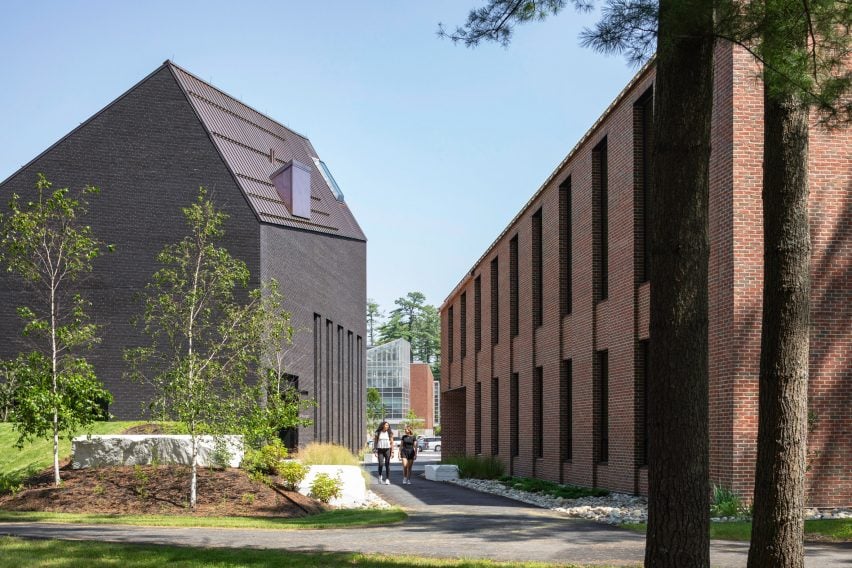
While different in size and colour, the buildings have asymmetrical pitched roofs that "play off each other from different vantage points".
Both buildings also have mass timber frames, wooden interior finishes and brick facades.
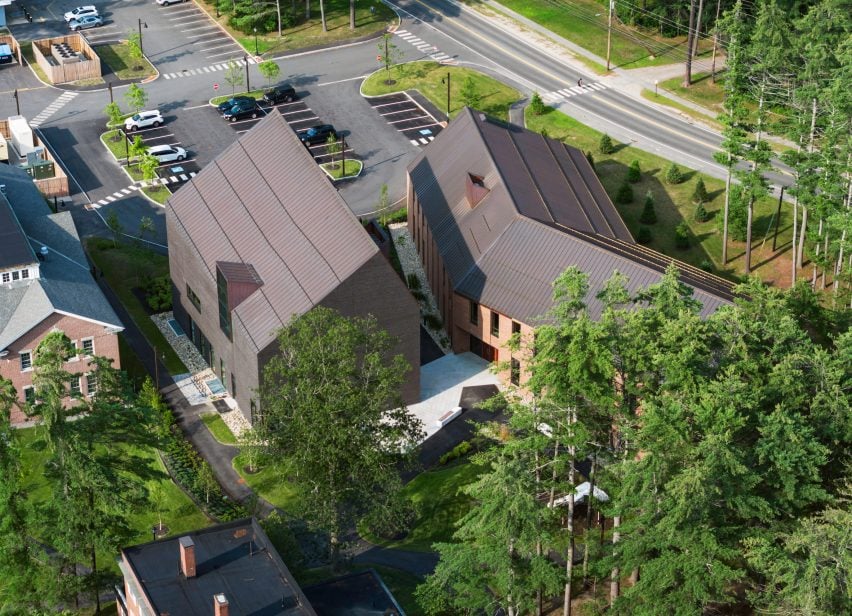
The materiality was influenced by the region's forests and the existing brick buildings at Bowdoin College, which was established in 1794, "at the dawn of the American republic".
Today, the private college has about 1,900 students from around the world.
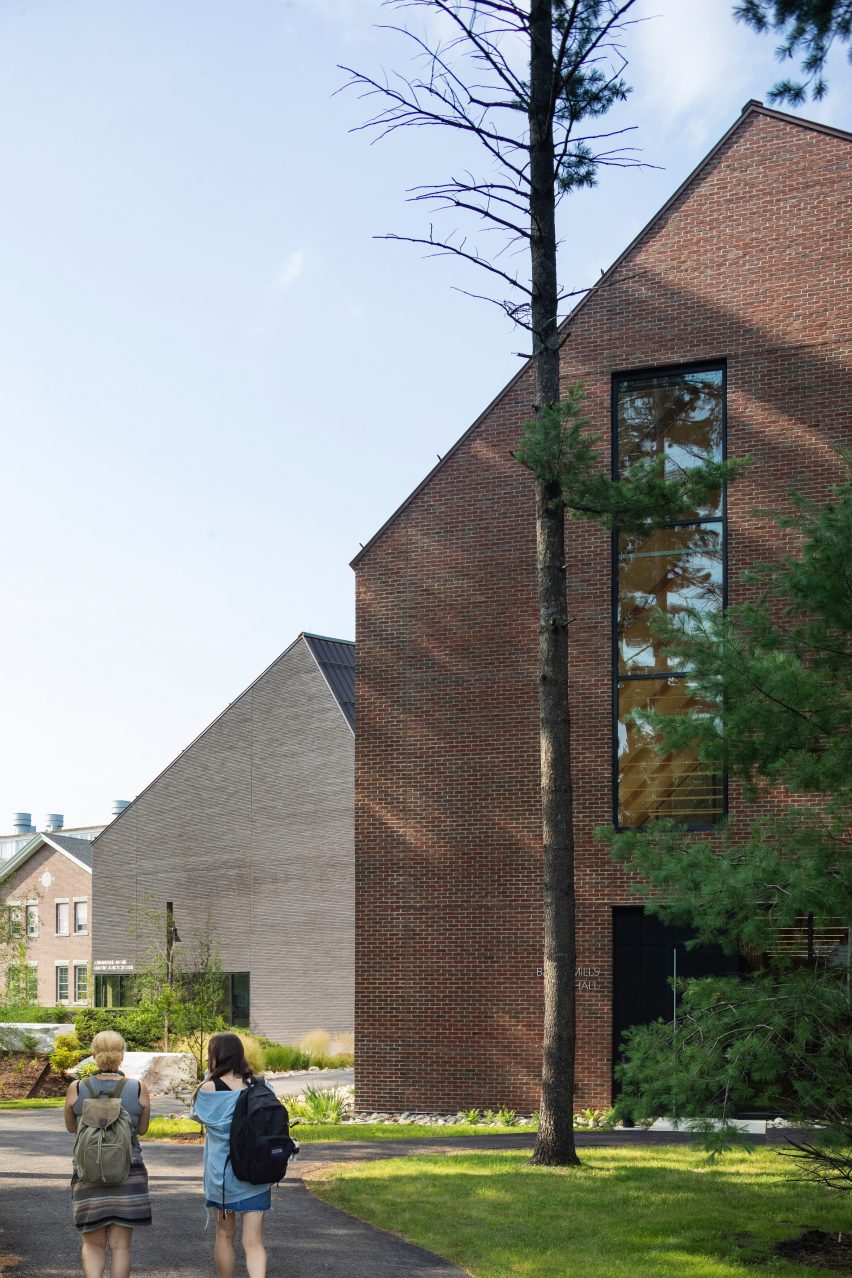
The new buildings – officially called Barry Mills Hall and the John and Lile Gibbons Center for Arctic Studies – were designed by American studio HGA, which served as both architect and structural engineer.
The studio collaborated with Consigli Construction Co, which is based in the eastern US.
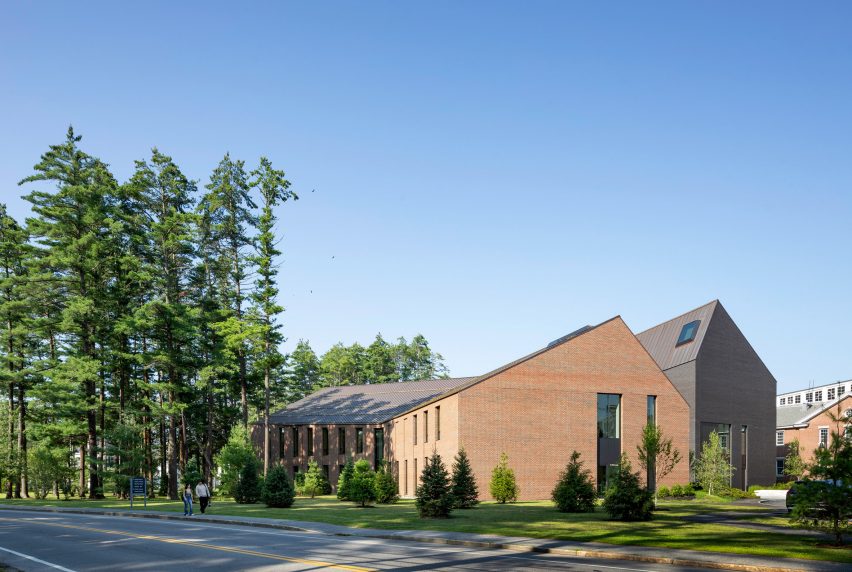
The larger of the two buildings is Mills Hall, a two-storey academic building that holds the departments of anthropology and digital and computational studies.
Encompassing 30,000 square feet (2,787 square metres), the building is rectangular in plan with a slight bend near the centre. Facades are clad in red brick, which is commonly found on campus.
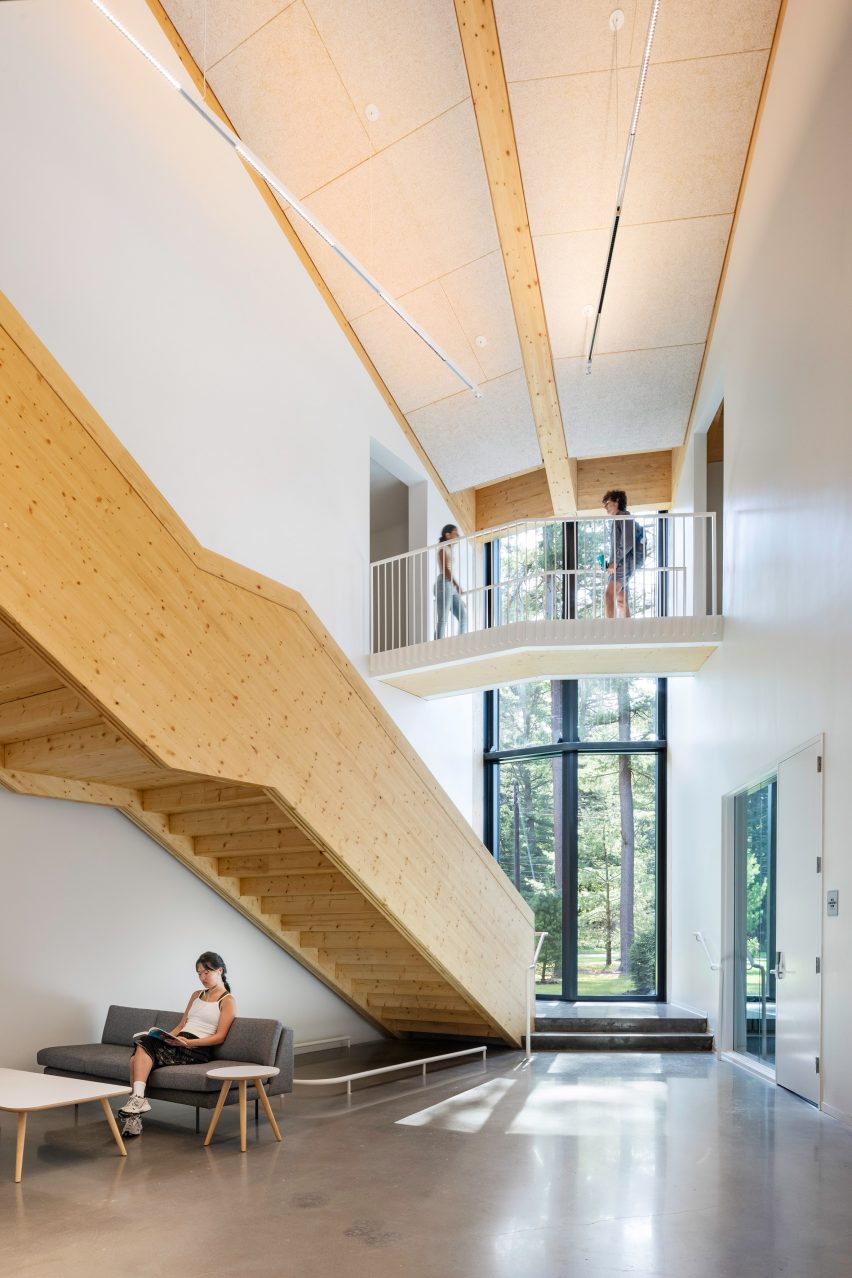
Mills Hall contains four classrooms and 12 faculty offices, all of which are afforded views, daylight and operable windows for natural ventilation.
Additional areas include a 60-person cinema, an event space for up to 300 people, and various "huddle spaces" to encourage student collaboration.
In contrast to its red-brick neighbour, the Gibbons Center – which is dedicated to arctic research and education – is clad in a rustic, black-brick exterior.
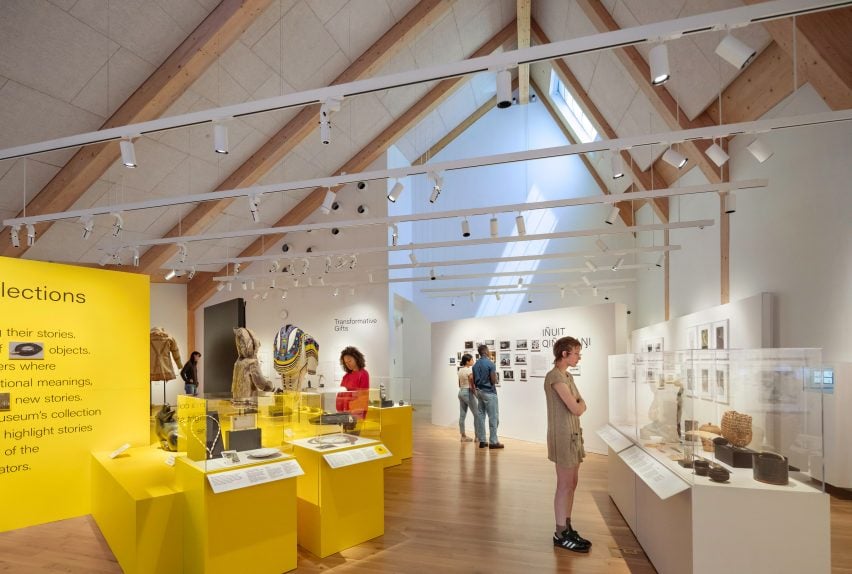
"Gibbons has a more mysterious, introverted quality," said Nat Madison, design principal at HGA.
"The black brick renders the building like a silhouette, while the beacon-like window overlooks the quad, revealing views of the galleries from campus."
The facade treatment was dictated by the interior programme of the three-storey, 16,500-square-foot (1,533-square-metre) facility, which includes offices, classrooms, an archaeology lab and the Peary-MacMillan Arctic Museum.
"A robust, high-performance building envelope and rigorous environmental controls allow the museum to protect and display sensitive artifacts," the team said.
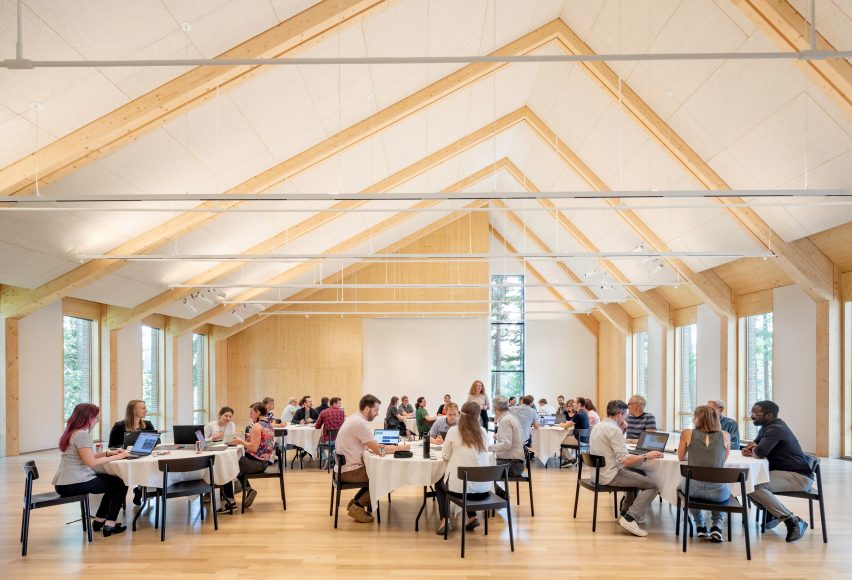
Both buildings were constructed using a timber frame system, which HGA estimates has reduced the "building's embodied carbon footprint by approximately 75 per cent when compared to a traditional steel structure".
The buildings are the "first commercially scaled mass-timber buildings" in Maine, the team added.
Other sustainable aspects include an all-electric heating and cooling system, which derives power from a photovoltaic array on campus.
Interior finishes include polished concrete flooring, spruce laminated panels and wood-fibre acoustic ceiling panels.
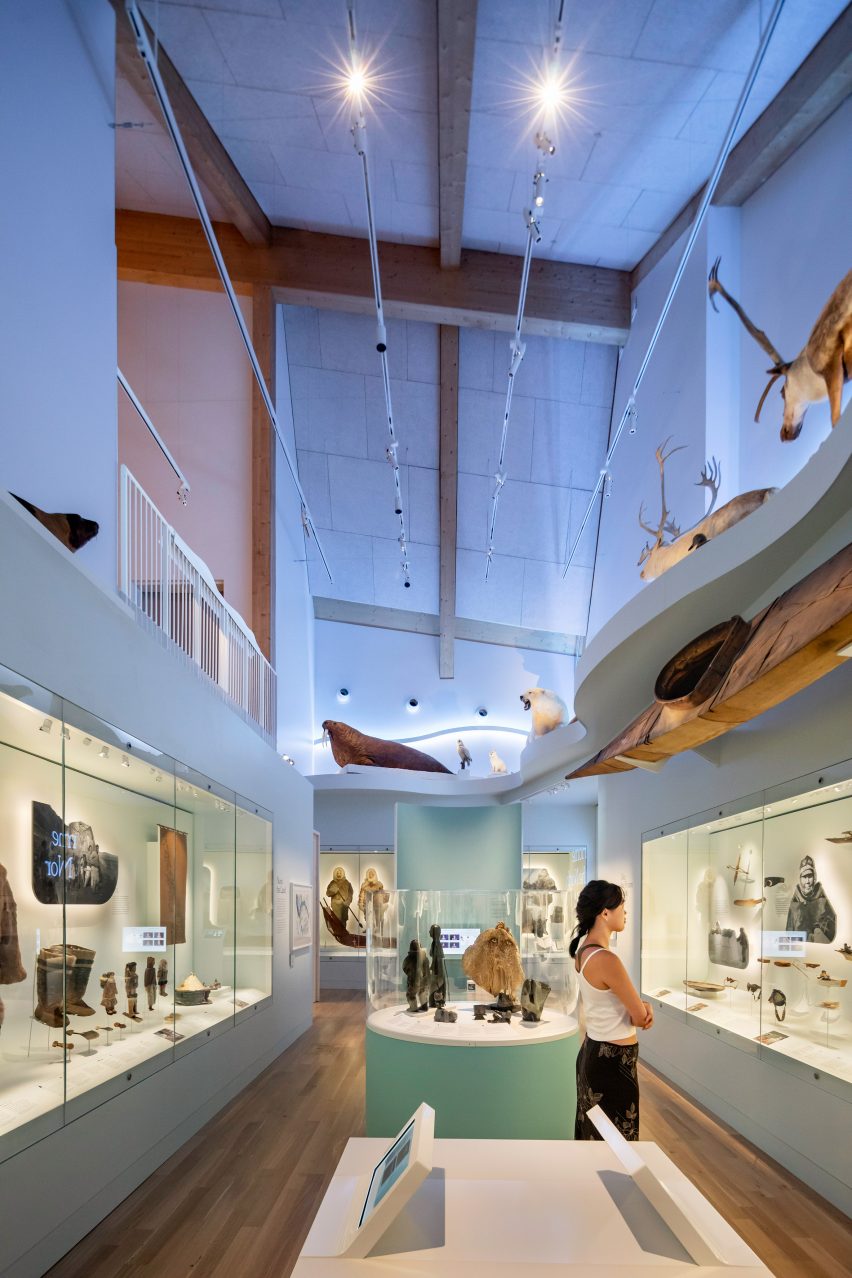
The surrounding landscape was informed by Arctic topography.
"Excess soil from excavation was used to form mounds, which were sculpted to look like snow drifts," the team said.
Pedestrian pathways are covered in granite pavers that evoke "ice flows", while salvaged marble blocks from a regional quarry were used to create seating.
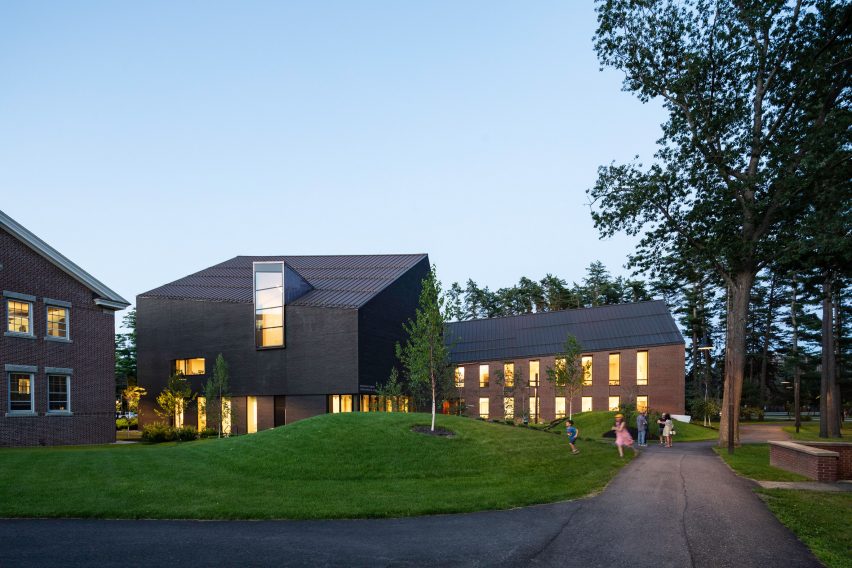
Moreover, the team planted more than 80 trees to replace felled trees and bolster the white pine grove to the east of the site.
Other recent academic projects include the eco-friendly revamp of a 1920s facility in California by Leddy Maytum Stacy Architects, and the completion of an Arizona science building by Grimshaw and Architekton that evokes rocks and saguaro cacti.
The photography is by Michael Moran.
Project credits:
Architect and structural engineer: HGA
Construction manager: Consigli Construction Co, Inc
MEP, lighting design: HGA
Civil engineering: Sebago Technics
Landscape design: Stimson
Mass timber: South County Post & Beam
Exhibit design: GSM Project
Acoustic and AV design: Acentech